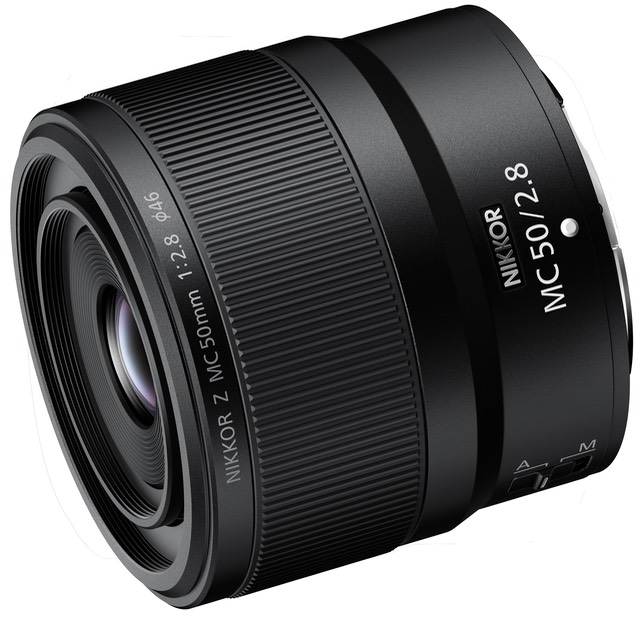
What is It?
The 50mm f/2.8 MC was the second in Nikon's one-two macro launch in mid-2021. This is a consumer line full frame lens that adds yet another 50mm optic to the lineup.
Priced US$50 higher than the 50mm f/1.8 S, the 50mm f/2.8 MC has a lot to compete with. The 50mm f/1.8 S is one of the sharpest "normal" focal range primes Nikon has ever produced.
The 50mm f/2.8 MC's optical design is relatively simple: 10 elements in 7 groups, with one each aspherical and ED elements. The front element is fluorine coated, but only Nikon's regular coatings are used to combat flare (e.g. no ARNEO or Nano coating).
The optical design also makes the lens somewhat compact, only 3" (74.5mm) long and 2.6" (66mm) in diameter when powered off. It's also quite light at 9.2 ounces (260g). All those minimalistic parameters attract a lot of folk who are just looking for a compact, light prime to stick on their new mirrorless body. To put that in perspective, the 50mm f/1.2 S is bigger (3.4" and 2.9"), and significantly heavier at 14.7 ounces (415g). The 50mm f/2.8 macro is also smaller and significantly lighter than the F-mount 60mm f/2.8 Micro-Nikkor.
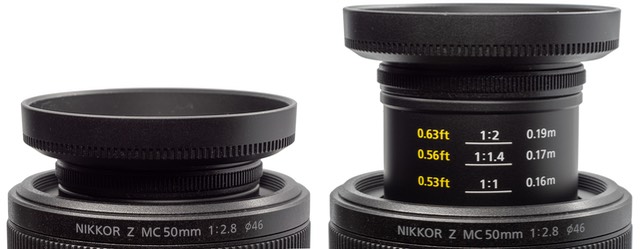
To achieve its close 1:1 focus ability (macro life size) the lens begins extending at focus distances of near 1' (0.3m) (starting just before 1:2 magnification is reached). The full length extension is about 1" (25mm). This also drops the effective aperture to f/5.6 (typical of macro lenses on extension). At 1:2 you're at f/4.5, 1:1.4 you're at f/5 maximum. Interestingly, the lens backs out of its extension (even if in manual focus mode) when the camera's standby timer expires or the camera is turned off.
The lens has two switches, one for A/M (autofocus/manual focus) and the other for range limiting (Full or 0.3m-0.16m). As with the 105mm f/2.8 S macro, I would have preferred that the lens also have a third position (0.3m to infinity).
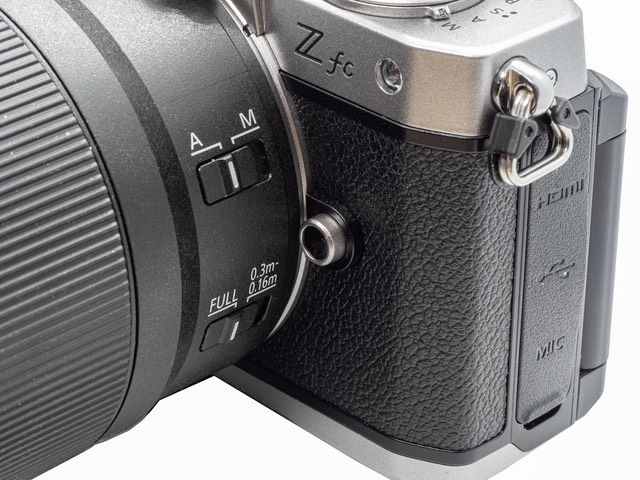
Apertures from f/2.8 to f/22 can be set with the lens not in macro focus distance range. At 1:1 that can push the smallest aperture down to f/32 due to the lens extension. The aperture blades form a 9-blade (mostly) rounded opening. As with a number of lower cost Nikkors, my sample had a tendency towards "pointedness" in one part of the stopped down opening.
The lens can be used with the ES-2 slide copying accessory, even though it has a 46mm front filter ring. The supplied HN-41 lens hood is a 46mm screw-in hood. The HN-40 hood of the 16-50mm also works fine on the lens.
While the lens isn't an S lens, it is weather sealed with gaskets at at least seven critical positions (though it doesn't have the additional rubber flap on the lens mount that some Nikkors do, just a plastic overlap).
The 50mm f/2.8 MC is made in China and sells for US$650.
Source of the reviewed lens: Purchased via NPS Priority Purchase
How's it Handle?
Not much to say, really. The lens has a wide focus ring (focus by wire) that's smooth in operation, and the two switches on the lens were sure and make definite clicks when moved.
Yes, polycarbonate was used in the external barrel to save weight, no I don't think that changes anything. If anything, the surface texture on the barrel behind the focus ring isn't as slippery as on some previous Z Nikkors.
On the Zfc the 50mm feels appropriate (though it looks wrong, being all black). You don't need the big hand grip of the Z50 or the full frame cameras with this lens, as it's small and light enough to use a soap bar camera. However, at close macro distances, the lack of a hand grip on the Zfc might become a problem for some, particularly since the lens doesn't have VR.
How’s it Perform?
Focus: Focus speed is a bit more variable with this lens than I was used to. When used in Full range on more distant subjects, focus was often fast and unnoticeable, though I detected a few times (on the Zfc) where there was a clear hesitation in focusing, typically when the Auto-area AF was moving between human and non-human subjects. For generalized work, I'd put the lens in the category of moderately fast for focus speed. But it's not a speed demon, by any measurement.
With macro distances, even with the limiter turned on, the focus was more slide-to-focus than snap-to-focus. I again wouldn't call it fast or slow, just a noticeable slide.
I did notice focus "hunting" both in AF-S and AF-C modes. Curiously, more often than not I could hear the lens chattering but not really see the hunt. The chattering isn't loud, but it's definitely not silent, and again, you can't always see the focus point moving. I found this a curious change from other Z Nikkor behavior, and it seems contradictory to Nikon's marketing message of "suppressed hunting."
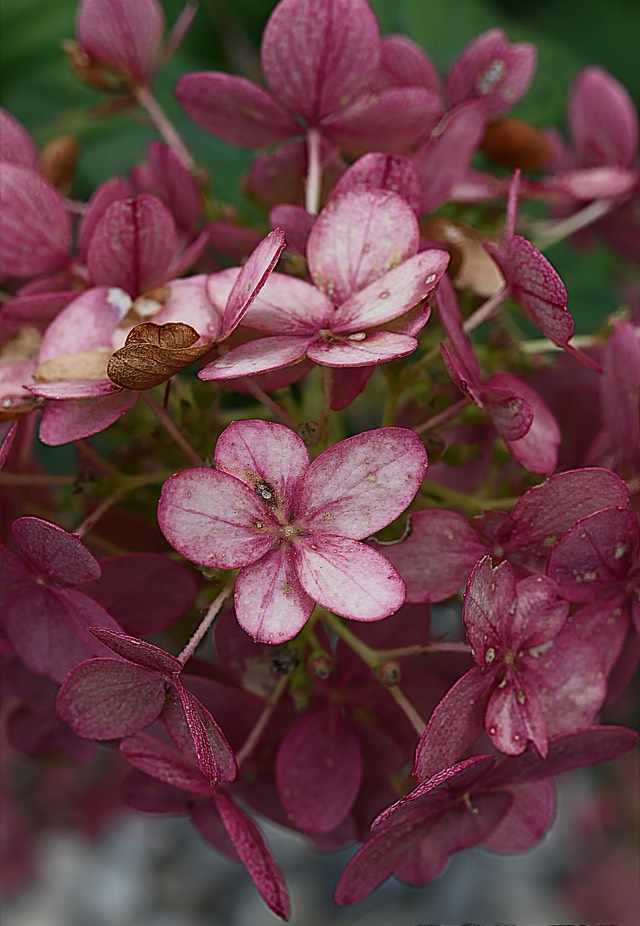
Sharpness: While others are shouting the praises of this lens optically, I’m going to temper that some.
Central sharpness is very good wide open, but you get a distinct boost by stopping down to f/4. At all non-diffracted apertures beyond wide open I’d call the center performance clearly excellent, which is probably where most of the praise is coming from. Across the entire DX boundary the lens is very good wide open and improves to excellent by f/5.6. Again, praiseworthy.
Corner performance for full frame, however, is just barely into good wide open, and it doesn’t really improve much; I'd put it right on the good/very good boundary until f/5.6. At f/8 it’s clearly very good, but on high pixel density cameras diffraction begins to antialias edges beyond that.
I’m quite satisfied with the performance given the price of this lens and the fact that it’s rare that the ways I’d use this lens I'd have to lean much on the extreme corners. On a Z50 or Zfc, this lens should look very good across the frame at f/2.8 to f/8, though the corners will be slightly softer than the center. On a Z7 II, I would have liked just a little more snap in the full frame corners. Spherical aberration is reasonably well controlled, which means focus shift isn't a significant issue. Coma is a bit higher, but still not something I'd complain about. Coma is probably the primary contributor (along with restrictive imaging circle) to softer edges.
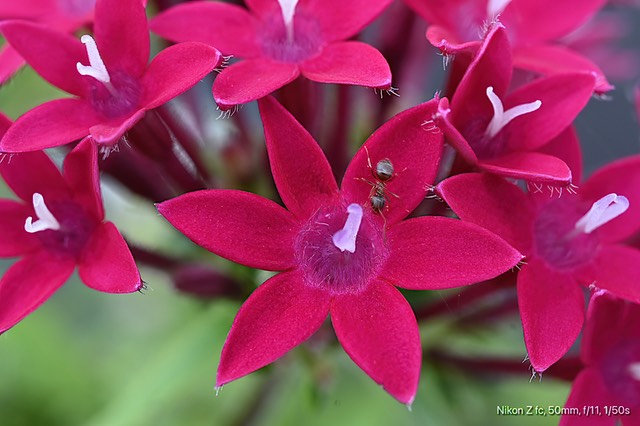
If you're curious, the 50mm f/1.8 S is an optically more accurate lens at all equal apertures, but it's also a far bigger lens.
Chromatic Aberration: Excellent results, even uncorrected. Virtually no lateral chromatic aberration, and very low longitudinal CA, as well, even at macro distances.
Vignetting: Probably the worst of the optical attributes: not only is the wide open performance clear (about 2EV in the corners), but there's also not a very large area that is fully clear of any vignetting; even at the DX crop you'll see two-thirds of a stop of light falloff at the wider apertures. Vignetting doesn't get to my "mostly ignorable" levels until f/5.6. In-camera corrections don't completely eradicate the vignetting, though it makes the lens reach my mostly ignorable level.
Linear Distortion: Well under 1% pincushion distortion uncorrected. Corrected you shouldn’t have any issues.
Flare: mostly a veiling flare when bright lights are in the frame, a bit more than I'd like, but very correctable. No obvious colored artifacts spread out into the frame with edge light sources. Sun stars have a spread to them that some won't like (i.e. spikes less defined).
Bokeh: a small bit of rim highlighting and minor onion skinning. Cats eye is an issue at wide apertures in the corners, though it isn't extreme. Nikon makes a big deal about the bokeh on this lens, and while I wouldn't say that it's the best I've seen, the out of focus areas on this lens do virtually nothing to call attention to themselves, which I appreciate.
Other: the lens does suppress focus breathing, though Nikon's suggestion that it also suppressed hunting is not supported in my testing.
Final Words
I'll admit right up front I'm not much of a fan of the short focal length macro lenses. The working distance at 1:1 of 2" is just too restrictive for me. On the other hand, if you're not trying to go life size but just break the usual 16" (0.4m) or so close focus distance of a normal lens, then the 50mm f/2.8 will definitely help you with that. So you have to ask yourself two questions: (1) can I light (and not spook) 1:1 subjects at 2", and (2) how often do I find the close focus distance of my 50mm limiting? Your answers to those two questions will tell you whether you want this lens or not.
As a full frame "normal" prime, the 50mm f/2.8 MC is competent. Not great and wicked sharp like the 50mm f/1.8 S, but competent while being significantly lighter and smaller. I wouldn't blame you for picking the macro over the S if you're just looking for a decent prime to stick on your Z5, Z6, or Z7 body, particularly the Z5 (the macro lens matches up a bit more on size that probably made you pick the Z5 in the first place).
Where the 50mm f/2.8 MC starts to become a little more interesting is on the DX bodies (Zfc and Z50). Now you're looking at something more like a modest portrait lens (75mm effective), and the traits of the lens actually make it fill that role quite well. Moreover, the lens is not too big that the gripless Zfc starts to become unhandleable (though at macro distances you'll want a grip). Unfortunately, the 50mm f/2.8 MC doesn't have VR, so you're going to need to watch your camera handling on both DX cameras.
The 50mm f/2.8 MC is probably the most meh lens Nikon has produced in the Z-mount lineup. Solid competency, but there's no feature or performance aspect that stands out and makes me go "yes, I need this." Moreover, there's the fact that the excellent 50mm f/1.8 S is less expensive. You're paying for smaller and macro, and you're paying in both dollars and acuity.
Update: improved wording concerning sharpness in DX format to better clarify what I meant.
Support this site by purchasing from the following advertiser:
